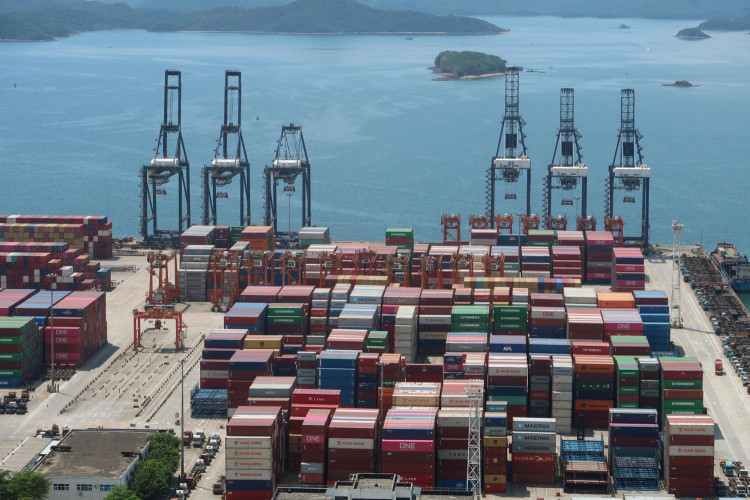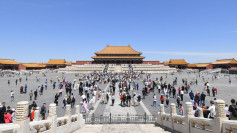China's exports to the United States dropped 34.5% year-over-year in May, the steepest decline since February 2020, as new customs data released Monday underscored deepening disruptions from the trade war with Washington. The sharp fall-amid recently announced tariff relief-preceded a second round of high-stakes trade talks set to begin Monday in London between Chinese Vice Premier He Lifeng and U.S. Treasury Secretary Scott Bessent.
Despite the slump in exports to the U.S., China's total outbound shipments rose 4.8% in May, according to data from China's General Administration of Customs. That figure missed expectations of a 5% increase and slowed from April's 8.1% growth. Imports fell 3.4% year-on-year, a much sharper decline than economists' forecast of a 0.9% drop, reflecting ongoing weakness in domestic demand. China's trade surplus surged 25% year-on-year to $103.2 billion.
The collapse in U.S.-bound exports-down to $28.8 billion from $44 billion a year earlier-was mirrored by an 18% drop in imports from the U.S. to $10.8 billion. China's trade surplus with the U.S. narrowed 41.6% to $18 billion. "The prohibitive tariffs were only lifted in mid-May, the damage was already done," said Tianchen Xu, senior economist at Economist Intelligence Unit.
Export strength came from other regions. Shipments to Southeast Asia rose 14.8%, while exports to the European Union and Africa increased 12% and more than 33%, respectively. Zichun Huang, China economist at Capital Economics, said, "Exports will likely rebound somewhat in June thanks to a 90-day suspension of most of the tariffs China and the U.S. imposed on each other in their escalating trade war."
Rare earth exports-an area of sharp geopolitical friction-fell 5.7% by volume in May to 5,865.6 tons. From January to May, the value of rare earth exports dropped nearly 21% year-on-year, although volumes edged up 2.3%. On Friday, President Donald Trump told reporters aboard Air Force One that Xi Jinping had agreed to restart rare earth shipments to the U.S., though Chinese officials have not confirmed the claim.
Beijing has maintained tighter controls on strategic exports during negotiations. China's Ministry of Commerce said Saturday that it would continue to "review and approve" rare earth export applications, citing rising demand in robotics and new energy sectors. U.S. officials, meanwhile, have criticized China for stalling on mineral commitments and for imposing fresh restrictions on chip exports and student visas.
Tariffs on Chinese goods imposed by Washington reached a high of 145% in April before falling to 51.1% under the preliminary Geneva agreement. Beijing lowered its retaliatory duties to 32.6%, according to the Peterson Institute for International Economics. "The acceleration of exports to other economies has helped China's exports to remain relatively buoyant in the face of the trade war," said Lynne Song, senior economist at ING Economics.
Other export categories reflected shifting demand. Auto exports jumped 22% while ship exports rose around 5%. Meanwhile, smartphone and home appliance shipments fell by about 10% and 6%, respectively. Soybean imports surged 36.2% to a record 13.92 million metric tons, reflecting both stockpiling and commodity price dynamics.






